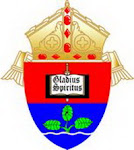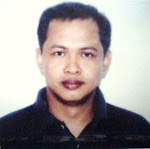Any textbook of history tells us that the Spaniards arrived in the Philippines in 1565 after many previous attempts. They contacted the Filipinos first in the Visayas and from there they proceeded to the north. This time they were able to stay in. In 1571 Manila was founded and from there started what is called the conquest or pacification of Luzon.
The following year the coastal area of Cagayan was explored by the young Captain Salcedo. He entered the Cabicungan and Abulug rivers and finally the Rio Granade, the biggest in the Islands, which was baptized as Rio Tajo. But he did not go inland, since the area looked from the sea and the rivers as very mountainous and forbidding. The "Last of the Spanish Conquistadors, " the dashing Salcedo, retired to the Ilocos region where he died in Vigan on March 11, 1576 at the ripe age of 27! Ten years later a Japanese fleet entered the Cagayan River and tried to settle there. News of the arrival of the unwelcome visitors reached Manila and Governor General Gonzalo Ronquillo sent "Captain Pablo Carrion with a group of soldiers in 1581 to drive away from Cagayan soil the Japanese pirate Tayfusa and his flotilla." Carrion succeeded in his mission and established a settlement in 1582 on the right hand side of the Rio Grande, 15 kilometers from the sea to be known as the city of Nueva Segovia, Lallo (Lal-loc) or Bagumbayang, eventually the capital of the Cagayan province, until it was replaced as the seat of the provincial government by Tuguegarao in 1839 (1).
Of course, no Spanish expedition or foundation could take place without the close collaboration of church and state, and so two priests were sent with the Carrion expedition, to serve as chaplains and perhaps to start a new center of evangelical activity. They were Fathers Cristobal de Salvatierra, a Dominican who had arrived in Manila with the first bishop the Dominican Domingo Salazar, whom he served as "provisor" or Vicar general, and Fr. Francisco Rodriguez and Augustinian. The two religious were soon discouraged by the resistance of the natives to receive the preaching of the Gospel, and the bad example set by the Spaniards in the area (soldiers and "encomenderos" alike) and decided to return to Manila. (1 b). In terms of a conquest, Carrion did not find it difficult to submit to the Spanish crown the different ethnic groups living in the area from he north all the way down to Tuguegarao, the flat region. The towns of Pata, Cabicungan, Masi, Abulug, Camalaniugan, Buguey and others voluntarily accepted to be under the King of Spain in the referendum conducted in 1599 (1c). The conquest of the rest of the province would be a different story. The town of Nueva Segovia would give the name to the entire Cagayan Valley which came to be known as the province of Nueva Segovia (from the Caraballos in the south to the China sea in the north, the Pacific Ocean to the east and the Cordilleras or Sierras, dividing the province from the Ilocos, to the west. The Valley was irrigated by the majestic Ibanag River, also known as Tajo and Rio Grande de Cagayan, the Magat and the Rio Chico, some times called Lobo). For a long time (till 1739), the only way to reach Bojeador cape and then by going upstream in the Rio Grande. The natural divisions of the Valley were the northern coastal fringe, and, southwards, the Itaves, the Siguiran, and the Irraya, the Diffun, the Ituy and Paniqui regions. Only in 1841 a division of the Valley or Nueva Segovia was carried out with the creation of the province of Nueva Vizcaya in the south. The Valley would de divided a new in 1856, resulting in three provinces with new boundaries, when the province of Isabela de Luzon was created.
The ethnic composition of Cagayan was a mosaic of small, different races and tribes. The area was not as thickly populated as for instance Pangasinan and the provinces in the low lands. As late as 1750 there were not more than 50,000 people in Nueva Segovia, 70,000 in 1800, and 185,000 in the three provinces in 1889. The main languages spoken were the Ibanag, the Itaves, the Irraya and the Gaddam, with many other dialects. The inhabitants were living in small settlements or hamlets along the riverbanks or in the cultivated plains, as hunters, farmers and fishermen. They had the reputation of being independent minded, valiant, bellicose, and hostile to other groups of course, to all intruders, like the Spaniards.
The Dominican Mission in Nueva Segovia or Cagayan In 1594 the Governor General Luis Perez Dasmariñas requested the Dominican Provincial Fr. Alonzo Jimenez to send missionaries to Cagayan. Though he was more interested, at the time, in sending them to China, he did not wish to displease the Governor and Fathers Diego de Soria and Domingo Castelar were assigned to open the new mission. It should be remembered that " the Founding Fathers" of the Dominican province of the Holy Rosary, among whom Father Diego de Soria was counted, had arrived in the Philippines only in 1587, where the Augustinian, the Franciscan and the Jesuit Fathers have preceded them. By 1594 they were already busy in Manila, working among the numerous Chinese or sangleyes engaged in trade and living there; they had extended their missionary activity to the Bataan peninsula and the province of Pangasinan and were eager to project their evangelical activity to other countries in Asia, as they eventually did in the near future (Japan, Taiwan, China and Vietnam). Fathers Soria and Castelar thought that the task was too much only two men and wee at the pint of retiring to Manila but, fortunately, a large group or "barcada" of Dominican religious arrived in Manila in 1595, and six of them, "the more apt and promising," were assigned also to the Cagayan mission. From then on they never entertained the idea of giving up the mission, no matter how difficult it proved to be. When the people asked them "when are you leaving Cagayan and go back to Manila," the ready answer was according to Fr. Aduarte:"when your big river (Ibanag) runs dry" (2a). Nueva Segovia was created a diocese precisely in 1595. It was one of the three suffragans of Manila, raised to the rank of archdiocese that same year, the other two being Cebu in the Visayas and Nueva Caceres in southern Luzon. Nueva Segovia, in the north of Luzon, counted with the Augustinian missionaries in the Ilocos region and the Dominicans in Pangasinan and Cagayan (Lallo' was the see of the new diocese, which would be eventually transferred to Vigan or Ciudad Fernandina in 1760 for the sake of accessibility, but still keeping the original name of Nueva Segovia). The first bishop of his diocese in 1599. " After arriving from Spain, he went immediately to is poor diocese to take care of his sheep, many of whom were in the province of Nueva Segovia, almost all of them pagans ("infidels"); there were only some 200 baptized adults, the non baptized being innumerable, since the preaching of the Gospel had started only a few years before" (2b). One year later bishop Benavides was transferred to Manila, named archbishop of the metropolitan see. He is better known as the main founder of the great University of Santo Thomas. The second bishop of Nueva Segovia was the founder of that mission, Fr. Diego de Soria (1604-1613). " It was he who, while still a simple religious, gave to the mission its first origins, it was he who built the first churches for the natives, began the work of their conversion and administered the first baptism to a native in that province. And thus, can be said, that he was the Father in Christ of that church" (3). He had been the first prior of the Santo Domingo convent in Manila and afterwards a zealous missionary in the province Pangasinan before being assigned to Nueva Segovia " He was the first minister that those natives had. He built churches and baptized many and very important people among them, and to the most important of them all in the region, Don Diego Siriban, who before was an outlaw, roaming through the mountains ("andaba levantado e inqieto por los montes"), an enemy of the Spaniards. Fr. Diego de Soria reduced him, made him his friend (gave him his own name in baptism as a sign of predilection), a Christian and a very good Christian at that! Another seven native leaders ("regulos") received the baptism together with Don Diego in 1596 (4). In 1599 Fr. Soria was called to Manila, reelected prior in Santo Domingo convent, and then he was sent to Spain to attend to some business of the Dominican province of the Holy Rosary, from where he returned to the Philippines in 1603 already consecrated bishop of his beloved mission on Nueva Segovia, where he arrived in 1604. He lived there until 1613 when he died in Vigan; his mortal remains were brought to Lallo in 1627 to repose in the Dominican church there. These were the beginnings of the Dominican mission of Cagayan, a mission that would continue uninterruptedly for three hundred years (1595-1898), the Dominicans being the only missionaries in the Valley during the Spanish period. More than 275 of them played a more or less important role in this saga of evangelization. The first few years are the more difficult ones in any enterprise and, above all, in the work of the missions, when the missionaries have to learn one or several new languages without the help of teachers, grammars and dictionaries (grammar and dictionaries that they would eventually by the first ones to compose), having to adapt themselves to a new culture an a totally different way of life. The Dominican missionaries in Cagayan increased from 18 in 1598 to 34 in forming small teams that, while living together, would take care collegially of several towns ad settlements in the region (5). The first concern of the missionaries was to bring the people together in larger settlements or towns ("pueblos"), where they could live a more civilized form of existence with more social intercourse, cooperation and protection, Having them all living "bajo campana" (or within the church-bell hearing) was much easier also to instruct them and maximize the limited resources of personnel, religious and secular. By the end of the Spanish period (1898) thee were 34 Dominicans in the province of Cagayan in charge of 27 towns, with 106,942 souls; 16 in Isabela, in charge of 15 towns with 56, 248 souls; and 14 in Nueva Vizcaya in charge of 12 towns, with 22, 458 souls (5b) A historian has written that "the evangelization of the Cagayan Valley is one of the most heroic feats ever accomplished by the Dominican Order. There were many primitive ethnic groups, a veritable label of languages and dialects, diverse climates, difficult topographic conditions, and there many lives of religious, some of them in the vigor of their youth, were lost." (6). It was undoubtedly, the evangelization of the Cagayan Valley that became more costly to the Dominicans in their missionary efforts in the Philippines in terms of lives and of personal sacrifices. Throughout the more than three centuries of uninterrupted evangelization (1595-1898) " the Dominican founded and/ or evangelized a considerable number of towns, accompanied the people of the Valley in the vicissitudes of everyday life, helping them to improve their living conditions with the introduction of new crops and better farming and fishing methods imported from abroad and, above all, and promoting their moral uprightness b imbuing them with Christian values and ways of living their faith" (7) 3. The Itaves region and the town of Piat One of the first areas of the Cagayan Valley to receive the benefits of the Dominican evangelization was the Itaves region, bathes by the waters of the Chico River, "a picturesque valley between the towns of Nassiping and Malaueg.: A missionary outpost was established there in 1596, comprising a territory that would later on be occupied by the towns of Taban (today Santo Niño, Malaueg (today Riza), Tuao, Piat and the Santa Cruz mission. In 1604 three religious were appointed to look after the areas. "once the missionaries entered there, they reduced the people in the area to the three large towns ("pueblos"} in order to instruct them more easily , since before they were scattered in many small hamlets or "rancherias." One of the new towns, with some 500 tributos" was called tabang (its church was dedicated to San Raymond), and the other two, with more than 1,000 "tributos" each, wre Piat (with its church dedicated to St. Agnes of Montepulciano, even if later on was changed to St. Dominic), and Tuao (with its church) dedicated to the Holy Guardian Angels, or Santos Angeles Custodios") (8). The town of Piat (whose name could be derived from the word "piya" in the Ibanag and Itaves dialects, meaning "goodness, kindness, good health") was, then , one of the important towns in the Itaves region; it had its rich, cultivated fields or "sementeras" irrigated by the Chico river. It was the administration of the Dominican Provincial Fr. Miguel de San Jacinto (1604 - 1608) that a missionary outpost was created in Piat (in an area entrusted to the "encomenderos" Pedro Barrera, Juan de Aranada e Isabel de Cardona). The first Holy Mass in the town was celebrated on August 24, 1604 (9). On May 1, 1610 Piat was made the center of mission, a sort of a parish with many barrios, dedicated to St. Dominic of Guzman, Fr. Melchor Manzano was appointed Vicar or regional supervisor of the Itaves region with Fathers Francisco Jurado and Juan Bautista Cano as assistants or members of the team. In 1612 the Vicar of Piat and Tabang was Fr. Juan de Leiva, with Fathers Garcia, Diego Collado and Pedro Gascon as assistants or team members. In 1614 the towns of Tabang, Piat Tuao, Malaueg, and Santa Cruz de Lingay formed the Itaves district, with Fr. Melchor Manzano as Vicar again, assisted by Fathers Tomas Villar, Juan Bautista Cano, and Gaspar Casablanca. In 1616 the mission was entrusted to Fathers Gaspar de Casablanca Jeronimo de Zamora, Domingo Fernandez and Pedro Murie. In 1619 it was under the care of Fathers Carlos Clement, Jeronimo Zamora and Gregorio Terroba. In 1621 there were only two Fathers assigned to Piat, namely Fr. P. Juan de Santa Ana and Lucas Montaner. In 1623 Fr. Juan de Santa remained there, together with Fathers martin de la Asuncion and Juan Bautista Meneses. In 1625 the famous Fr. Ambrosio de la madre de Dios was in charge of the mission, with Fr. Ildefonso de Santo Domingo as his assistant (10). We think it is relevant to mention all these names not only because all of them were great missionaries, some of them very saintly, but also because they were familiar with the origins of, and the devotion to our Lady of Piat. I would like to underlined that it was also part of the Dominican policy at that time to change the missionary team in a certain area every two years, particularly when the same language was used in the different town of assignation. The criteria for these assignation were: more detachment, and a greater mobility and efficiency.
















No comments:
Post a Comment
You may also E-mail us at dzns@cmn-ftd.org or dennisjavillonar@yahoo.com and davidjustin2008@hotmail.com for your comments, reactions as well as your suggestions.